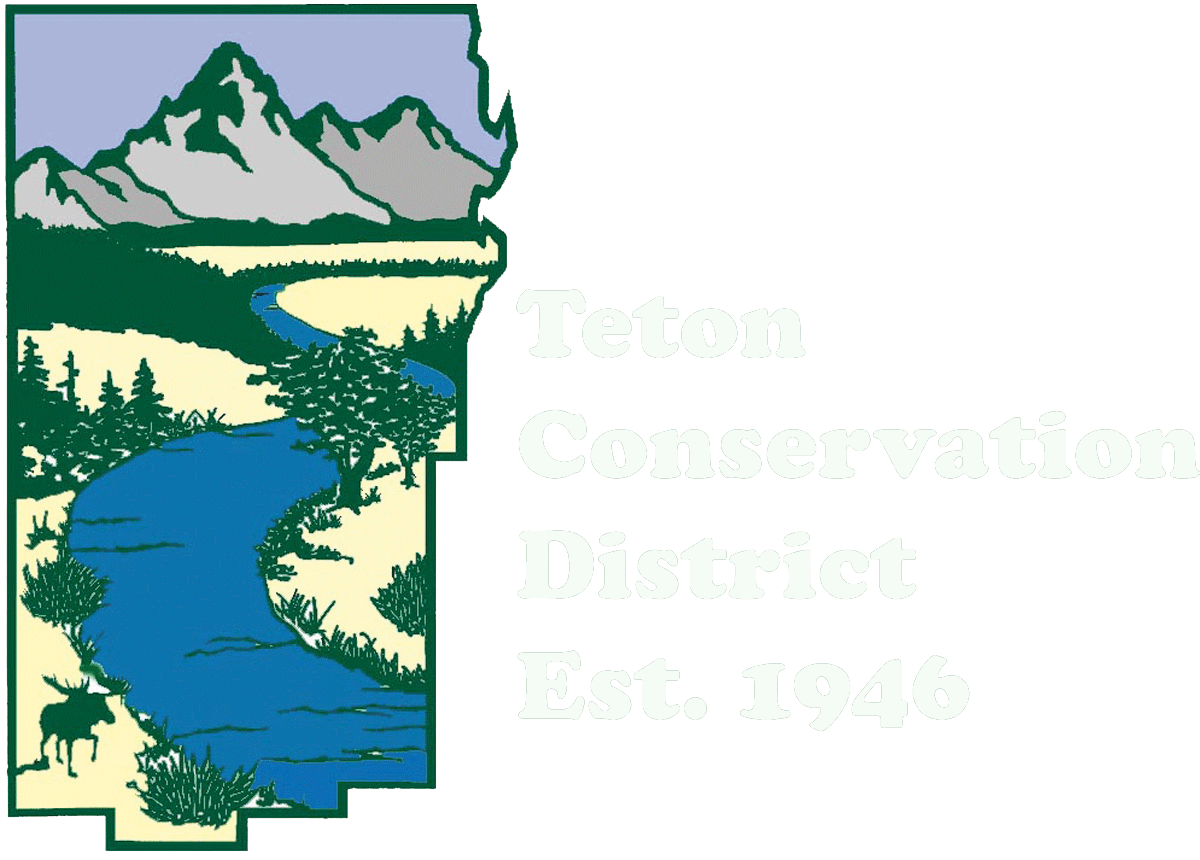By Morgan Graham, GIS & Wildlife Specialist
Morgan with other TCD staff, Phoebe and Emily, pulling musk thistle along the Game Creek Trail. Join the weed warrior team at www.tetonconservation.org/invasive-species
A confession…on these azure blue August days, I sometimes imagine myself as a moose browsing an endless buffet of thistle blossoms. For the past 10 or so years I devote about 40 late summer hours to mechanically removing millions of musk thistle (and other) seeds from otherwise high-quality habitat.
Now if you are a rational human being, you might be thinking “you’re wasting your time…they’ll just come back next year?” -or- “What’s the big deal?…the bees and butterflies love them” -maybe even- “I like thistles, they’re on my family coat of arms and are prickly just like me.”
Love them or hate them, the goal of this thread is to serve up some timely tidbits on one of our most prolific non-native plants. Let’s start with some context.
As a teenager in southeastern Pennsylvania, I used to religiously refill our backyard feeder with “thistle seed.” The reward was a local flock of chittering American goldfinches who would perform aerial acrobatics all summer long. Turns out that the Nyjer thistle seed sold as bird food is Guizotia abyssinica aka ramtilla or African yellow daisy. Not a thistle at all. Bird seed is traditionally heat-treated to render it sterile. For at least a couple reasons, the chances of a musk thistle growing along your favorite forest service trail originating from a bird feeder are less than your chances of cultivating a jar of sesame seeds from a Big Mac bun.
So where did musk thistle come from? Geographically it is native to Western and Central Europe. The USDA cites an initial observation in central Pennsylvania in 1852. Ship ballast was the suspected travel agent. It now grows in all US states except Alaska, Florida, Hawaii, Maine, and Vermont.
But musk thistle is beautiful; how could it be bad? You’re right. Musk thistle blossoms on a desiccated landscape are striking. Chirag Mehta made a cool 'Name that Color' tool. It says musk thistle flower is some combination of 'Heliotrope,' 'Flirt,' and 'Razzle Dazzle Rose.' Unfortunately, musk thistle degrades pastures and wildlife habitat by competing with desirable forage and native vegetation. Sharp spines make dense patches impassable. I've seen elk and mule deer eat a few old seed heads but they ultimately get more nutrition from displaced native bunchgrasses and shrubs. Bees and butterflies will mob the magenta in August but are left with reduced housing and dining options to sustain them the rest of the year. Still not convinced? You are in luck. Musk thistle is firmly established and continues to expand in Teton County. If you are interested in maintaining diverse native plant communities for the benefit of wildlife big and small, read on.
Whether you have five musk thistle at the end of your driveway or 5,000 along your favorite forest service trail, the treatment is the same. Musk thistle is a biennial plant, meaning it lives for two years, flowers, and dies. In year one it grows as a flat rosette, storing energy into a tap root. In year two, it puts up the familiar spiny stalk and anywhere from one to 100 seedheads. Herbicide is effective when applied properly to rosettes or to second year plants before flowering begins. Once a plant flowers, herbicide is ineffective at reducing viability of the seed. So even if a flowering thistle droops after spraying, if the flower goes to fluff, the plant wins. Herbicide is a tool, but has cost, limitations, and potentially negative consequences to beneficial plants and pollinators. It is not uncommon to observe an area nuked by herbicide one or two years prior with the only regrowth comprised of musk thistle or other invasive plants. My personal preference is to keep it simple with slow and boring mechanical control. You can end rosettes and pre-flower second year plants by digging when soil conditions allow. Removing blossoms with thick gloves, adding them to a trash bag, then pulling and leaving the remaining plant to decompose will starve the soil of seed when repeated each year. This method requires returning to the same area for multiple years (as does herbicide), but the results are steady and the negative impacts to native plants and pollinators are minimized.
I fully understand there are strong and diverse opinions on how to best approach non-native species. This is what has worked for me. Feel free to share your perspectives by sending a note to morgan@tetonconservation.org
We partnered with Bridger-Teton National Forest and passionate volunteers over three ‘Thistle Thursdays’ to complete our fourth and most successful year of mechanical thistle control in Game Creek. Seventeen people and 89 combined hours = ~655 pounds of seedheads pulled. Check out the before and after pictures above to see how much of a difference you can make!


